How to Get Rid of Weeds Between Interlocking Bricks
Remove weeds. How can I remove grass grooving between boulders? What is the easiest way to get rid of weed between stone pavement in front of the house? Is boiling water good for exterminating weeds? Does salt prevent weed to grow between rocks? How to remove weeds? How to stop weeds from growing between paving slabs?
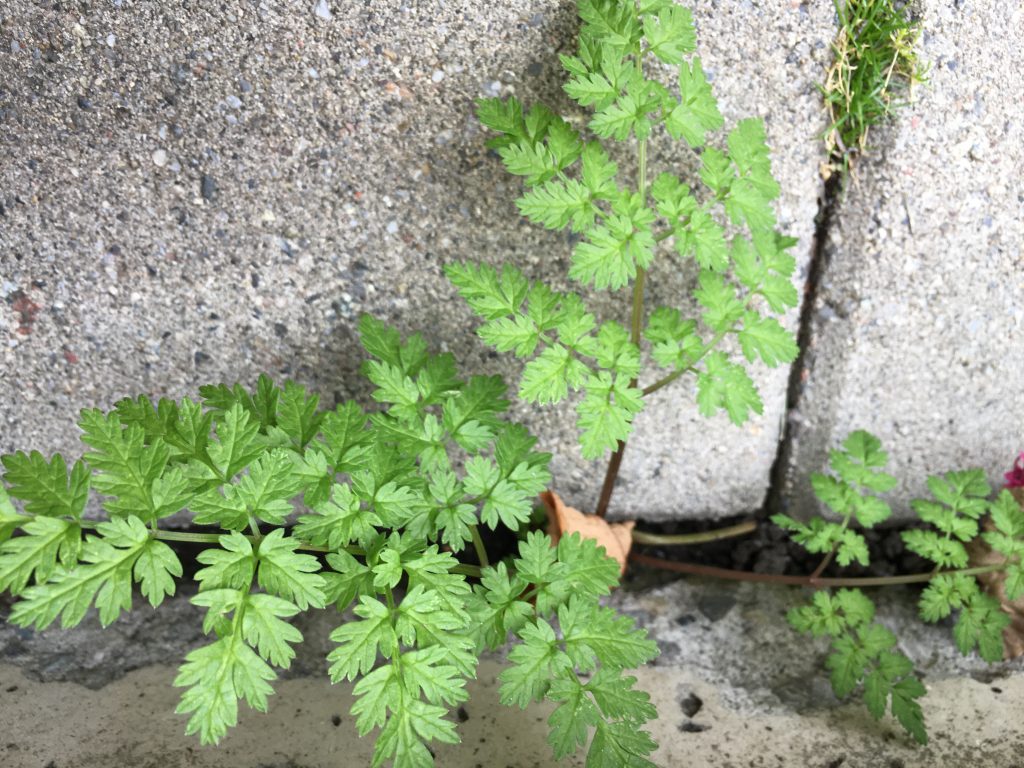
Easy ways to remove weeds
We are not going to get into poison here, that is something of the past. We want an environmentally friendly way to remove weeds and other vegetation in unpleasant locations, like between paving rocks on the way up to your house.
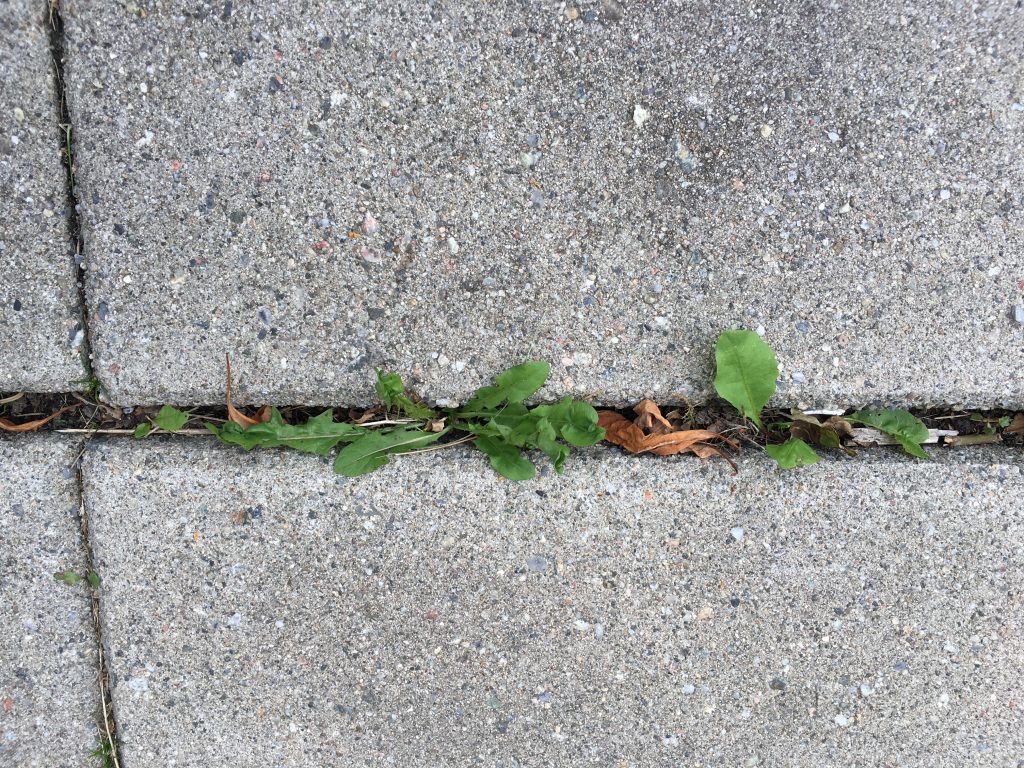
- Boiling water
- Salt
- Scraping (physical removal)
1 Boiling water
The most environmentally friendly method is often the best. A surprisingly easy and effective method for removing unwanted growth of greenery between rocks.
Think about how bad your skin becomes after you burnt yourself on hot water. Very few people survive third-degree burns that cover more than 50% of the body. A plant, grass, or weeds are also living organisms that do not stand boiling water well. Just like with the human body, you don't need to boil the whole plant or cover every area of the weed to kill it. The plant will suffer cold fire or effects similar to frostbite and the whole plant will likely die when the water transportation system is heavily damaged.
Furthermore, boiling hot water will also kill many seeds and roots close to the surface, making it easier for you to maintain a pretty entrance to your house next year. If you're lucky you can even get rid of some ants and spiders at the same time.
How to exterminate grass with hot water
- 1. Boil water in a kettle
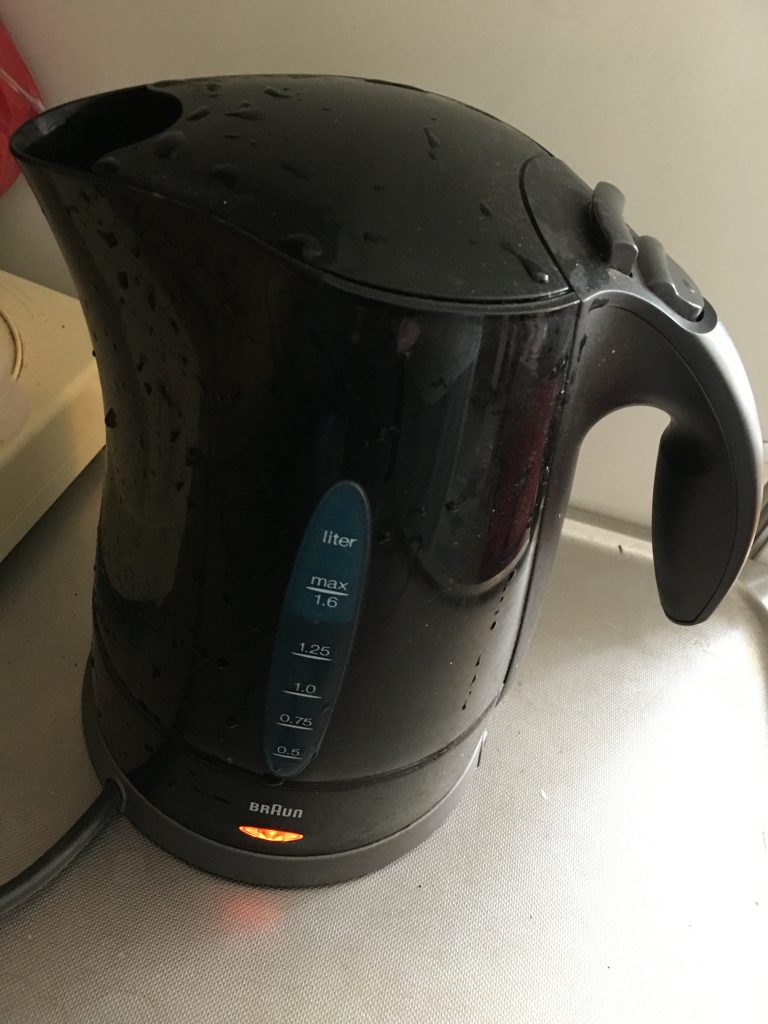
- 2. Pour the scorching water on the unwanted vegetation

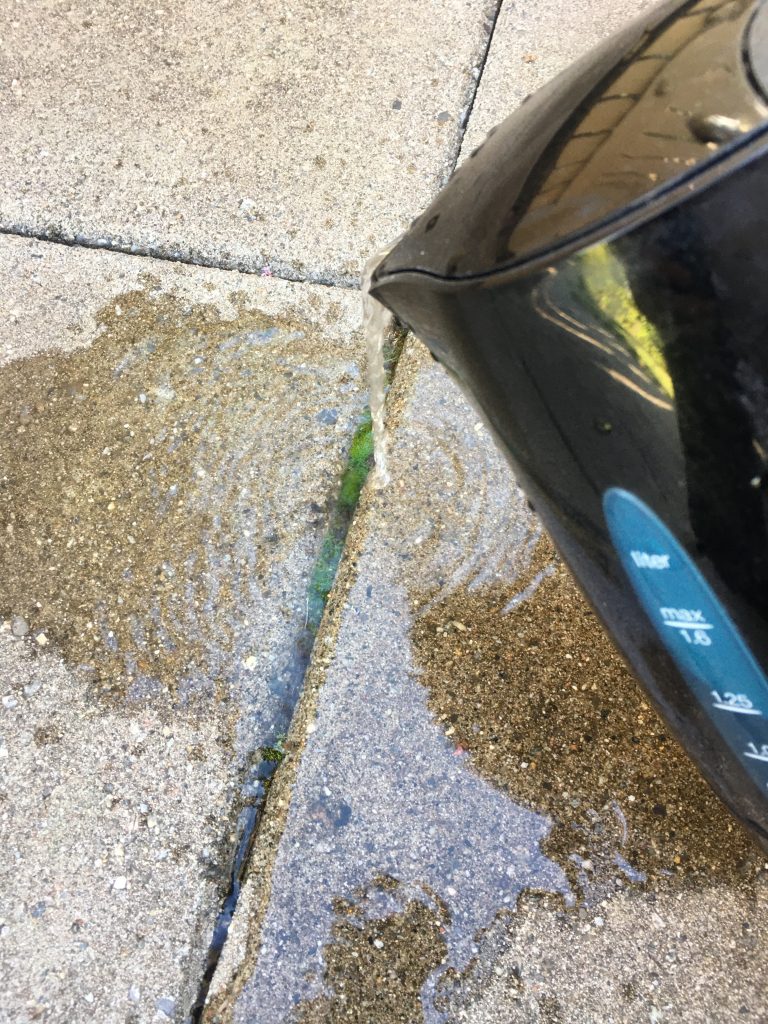
- 3. This is the result one day after hot water treatment
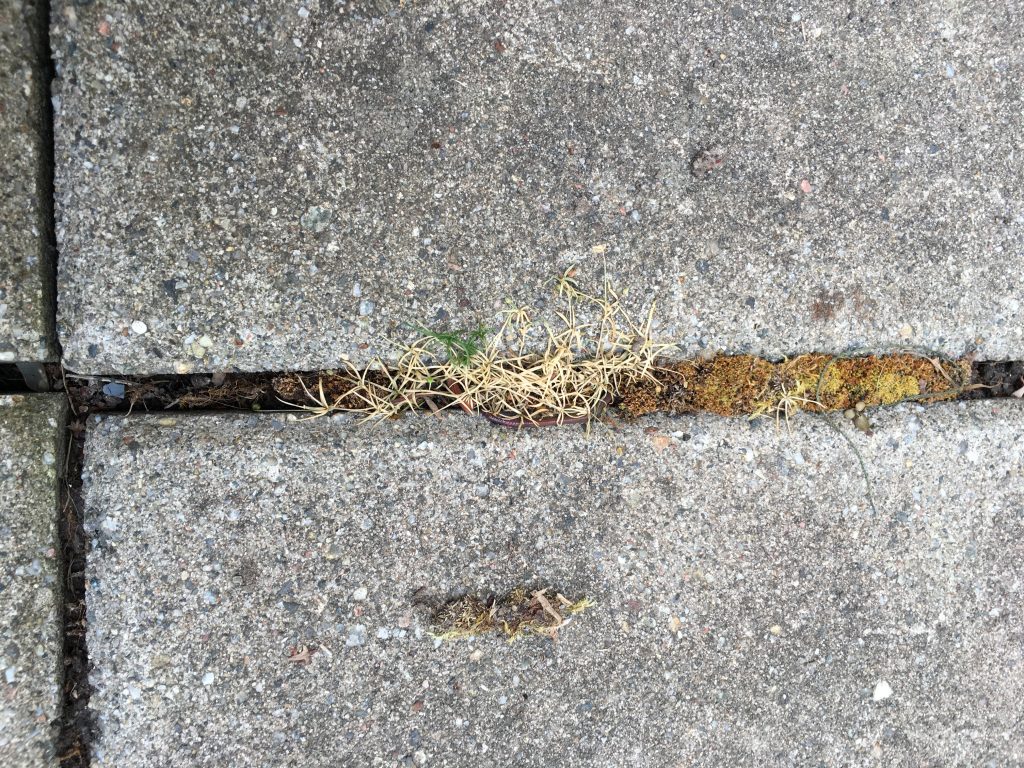
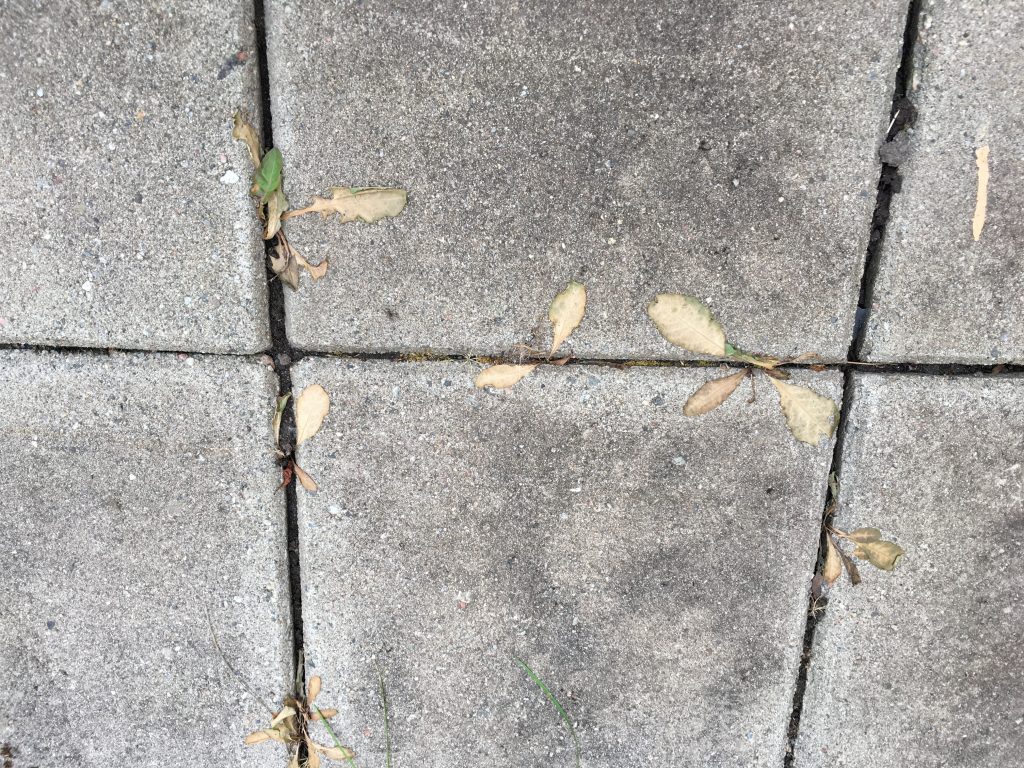
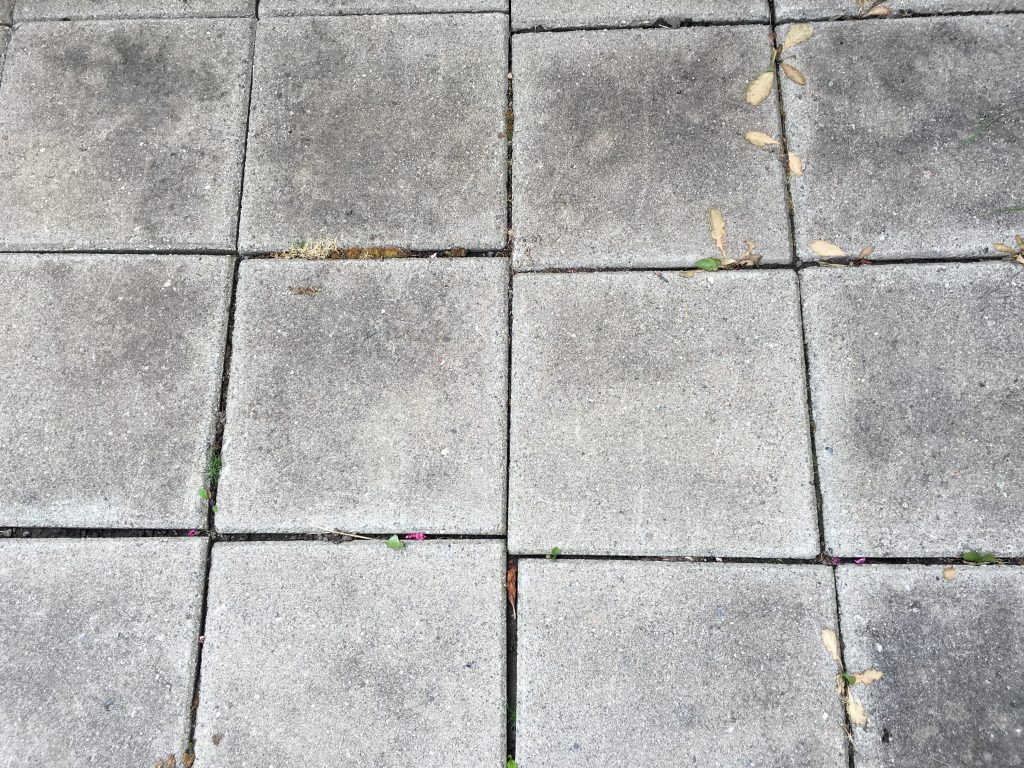
Just make sure you don't overdo it and pour excess water piling up in pools or pits, this could unintentionally start a mosquito farm since they need very small amounts of water to reproduce in.
Why does boiling water kill plants and grass?
There are several reasons why this is working so effectively for removing unwanted vegetation. All crops, flowers, herbs, vegetables, and flora are built with cells. When the water gets above a certain temperature, the cell walls break down, and proteins dissolve, break or change shape and structure. This pretty much disputes the whole "process of life" in any living thing.
Already above 50 °C (122 °F), most animals and plants struggle to survive. There are some notable exceptions, extremophiles, which can survive astonishingly high temperatures. The only life that survives sweltering temperatures is single-cell organisms, not complex plants or animals. The most hardened bacteria family we know of today is the Thermotogae and Aquificae, which have optimal growth between 60-90 °C (140-194 °F) but is known to survive 97 °C (206,6 °F).
There is also some very heat resistant vegetation like the moss, dwarf swan-neck moss (Campylopus pyriformis), which have been found to survive 72 °C (161,6 °F). But no plant on earth known today can survive temperatures above 80 °C (176 °F). This is why boiling water is such an effective weed killer.
There is still some life on the planet that can survive even boiling water. Hyperthermophiles thrive in scorching environments from 60 °C (140 °F) and even higher. Some bacterias are also able to live in boiling hot water of 100 °C (212 °F), but this is at great depths in the sea where boiling hot water does not boil because of the pressure.
2 Salt
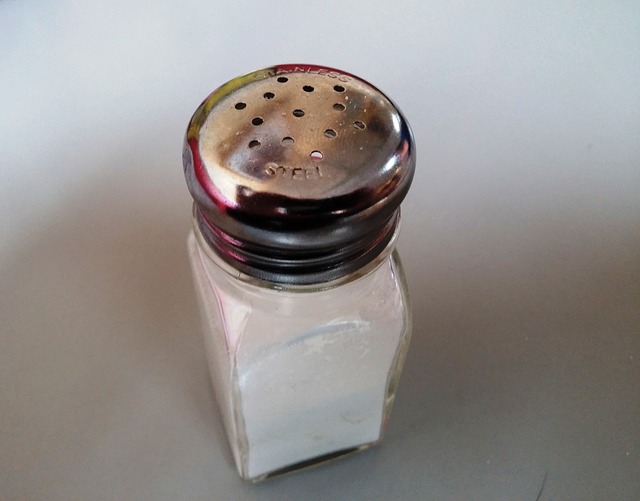
Farmers growing crops close to the ocean knows how devastating salt can be to growing crops. If the ocean floods the soil with salty water it can often ruin the possibility to grow anything for years to come.
One important reason why salt is so deadly to plants is that salt lowers the rate and amount of water that the roots can absorb from the soil. At higher concentrations, the salt also acts as a poison.
Some plats with high salt tolerance are Cotton, Asparagus, and Spinach (up to 10 g/l). In the moderately tolerant category, we find Tomatoes, Rice, Potatoes, Carrots, Onion, and Olives. While Peas, Beans, Apples, Oranges, Peach, and Almond are very sensitive to salt.
This method is temporary, and eco-friendly since rain will dilute the salt concentration in the soil and enable vegetation to grow again.
Still having problems with unwanted grass growing between rocks?
Step up the efforts and add dish soap and vinegar to the deadly saltwater mixture, and you will kill anything you pour it on.
3 Scraping
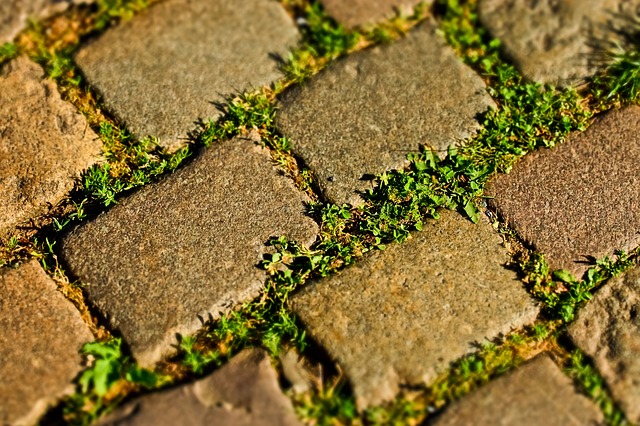
Probably the first attempt you made when trying to remove weeds from the space between paving stones. It's crude and cumbersome but effective. There is no reason to explain further why this works, but the grass will return sooner or later. If you have left your plot unattended for a considerable time, this method may need to be applied simply to get rid of all the excess growth. You could even use a lawnmower to cut and collect the grass if you have let a jungle grow between the rock tiles. You can still use method one or two after this third method to make it more effective and prevent the grass from growing up again within days.
How to Get Rid of Weeds Between Interlocking Bricks
Source: https://www.tricksntips.info/how-to-remove-weeds-between-paving-stones/